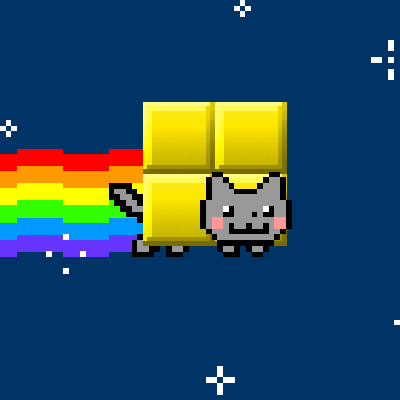20G
20G 是在标准俄罗斯方块场地(20 行高)内最大的重力。G 是俄罗斯方块特级大师系列游戏玩家社区约定俗成使用的重力单位,其用法来自航空等领域常用的术语「G力」(G-Force)。在俄罗斯方块语境中,G 代表「每帧下落行数」,例如 1G 代表每帧(以 60 帧每秒计)下落 1 行。而 20G 代表每帧下落 20 行——即整个场地的高度,表现为方块出现后瞬间落到最底。在这种情况下,游戏必须提供锁定延迟来让玩家操作方块,才能正常游戏。操作过程中,方块随时都是贴地爬行。
20G 重力会极大限制方块的落点和可移动的范围:方块显然无法直接落至场地两边,并且在落地后移动时还很可能被凸出的地形阻挡、被凹陷的地形卡住。玩家必须时刻注意自己的堆叠地形,也往往要快速做出复杂、困难的操作才能实现想要的落点选择。因此,20G 重力是一类较为困难的游戏环境,拥有独特且丰富的技术要求,与低重力环境完全不同。此时预操作也是几乎不可缺少的游戏机制,在较严格的旋转系统(如 ARS)、仅有一个预览块的限制下,玩家必须灵活运用预操作机制且在堆叠策略上为之做出相应妥协,才能勉强保障生存。
需要注意,20G 只表示重力环境而不代表某个特定难度,具体难度与锁定延迟、出现延迟、消行延迟等延迟参数有关。降低这些参数可以进一步提高游戏难度。
此外,个别游戏也会提供高度不为 20 行的场地、严格分析下第一帧没有完全落地的极端重力等。但是,玩家社区已经约定俗成习惯使用 20G 来代表「无限下落速度」「看不到下落过程」,因此可能把这些情况也称作 20G。
拥有 20G 重力的方块游戏
历史
大部分方块游戏都会逐渐增加重力来提高游戏难度。但是,早期的方块游戏很多不提供锁定延迟或几乎为零,方块触地后会瞬间锁定或者只能允许一格的移动。在这种环境下过高的重力是不可能正常游玩的,例如 Tetris (NES, Nintendo) 的最高速度是 1G 就已经长期被认为是必死重力,因此游戏也不会提升至 20G 的重力。
1989 年,TETRIS SEMIPRO-68k 首次提供了 20G 重力环境,当时在游戏中被称为「20 Cell」。
1998 年开始的俄罗斯方块特级大师系列以 20G 为核心特色并取得了相当的成功,至今仍是最著名和有代表性的 20G 游戏系列。
至今,已有大量游戏都提供会加速到 20G 重力的模式,一些游戏还会提供全程 20G 重力的高难度模式,甚至在抵达 20G 重力后继续降低延迟来不断提高难度。不过,由于 20G 的难度确实过高,官方俄罗斯方块游戏的主要模式通常仍只在中后期才逐渐增加到 20G 重力。
官方游戏列表
| 这段文字需要扩展。你可以帮助俄罗斯方块中文维基扩写。 |
- 俄罗斯方块特级大师系列:
- TGM 1:后半段;
- TGM 2:Normal 最终阶段、Master 后半段、T.A. Death 全程;
- TGM 3:Easy 最终阶段、Master 较后半段、Shirase 全程;
- TGM 4-AE:Asuka 全程、Master 全程。
- TGM Ace:Normal 14 级,HS1 6 级,HS2、Another、Another 2 全程。
- Tetris Kiwamemichi:方块入场后,先给半秒横移时间,再施加 20G。
- Tetris Advance:Advance 全程。
- Tetris:New Century:Extra 后期。
- Tetris DS:Standard 19级。
- Tetris Online (游戏):马拉松 19级、多人游戏中的“专家频道”。但由于实现细节,实际上是 17G。
- Tetris Friends:Survival 19级。
- Tetris (tetris.com)、Tetris Ultimate:Endless 19级。
- Tetris Zone、Tetris Party、Tetris Axis、3DS 版 Tetris Ultimate、Tetris Effect:Master 全程。
- Tetris (PlayStation 3):Radical。
- Tetris 99:Invictus、999 行马拉松。
- 俄罗斯方块效应:连接:Master。
非官方游戏列表
| 这段文字需要扩展。你可以帮助俄罗斯方块中文维基扩写。 |
- 俄罗斯方块特级大师系列的大量非官方复刻游戏:如 Texmaster、Cambridge 等。
- DTET:Furthest 模式、其他各模式的50级以上。
- Techmino:大师模式。其中大师 普通和大师 困难两个模式相当于俄罗斯方块特级大师3:恐怖本能段位考试的简化版。
- TETR.IO:Freefall 模组,全程。自定义房间中可以选择 20G 重力。
玩家操作与重力的优先级
根据不同 20G 环境对玩家操作与重力优先级的不同比较,可划分为「真 20G」与「伪 20G」。
以下图为例,玩家按住左移键并逆时针旋转 Z 块,若重力优先,逆时针旋转后会先下落,无法爬出;反之,则会先移动至左侧再检测重力,方块能够成功爬出。
|
|
操作优先 |
重力优先 |
玩家普遍将操作优先的环境称作伪 20G,而重力优先的称作真 20G。
以上讨论不考虑 ARR 的时间,即 DAS 充能后,方块在不再顶墙的瞬间便立刻移动
若考虑 ARR,则需要将其与「下落延迟」[注 1]进行比较。若下落延迟更大,则可被看作伪 20G,方块可成功飞渡;若 ARR 更大,方块会在移动前就掉入坑中,可被看作真 20G。
在 ARR=0 的环境下,伪 20G 与真 20G 的区别更为明显。下图中,Z 块试图左移到底,伪 20G 环境下,方块可以穿过中间的深坑,飞渡到另一侧堆叠;而真 20G 环境下则会掉入深坑。此时玩家若想让方块进洞,需要使用点按,放弃 ARR。
|
|
|
同样的,如果只是重力极大而不是下落延迟为 0,也会表现为伪 20G。
此外,一些游戏可能对于操作优先级的处理有更复杂的逻辑,不再能用简单的“真伪”描述。
攻略与技巧
20G 环境下,玩家需要面对形式多样的生存考验。贸然进入 20G 为核心的高难模式(如 TGM 系列的死亡模式),常常让玩家觉得移动非常受限:这里过不去,那里转不动。这是因为 20G 环境下涉及非常密切的,以踢墙为首的旋转系统考量,几乎所有旋转都涉及踢墙判定。TGM 系列本身的 ARS 带来的严格限制进一步增加了 20G 的难度(虽然好过其前身世嘉旋转系统)。
在后来的游戏中(如 TGM3、TGM4: AE和其他使用 SRS 及其变种的方块),踢墙条件不如 TGM 前两作严格。
以下简述一些情况与经验对策(适用游戏 TGM 1、TGM 2):
|
|
|
|
|
图一:方块堆第五列做成最高,越靠边越低(俗称“金字塔”),是好形,保证所有方块都能被移向两侧。
图二:掌握方块的预先旋转入场所在列位,提前长按旋转,接高难度操作,把方块运到边区的更优位置。
图三:反之,一些情况不能触发预先旋转(有意识地松开超长按)才能正确到位,转了反而被卡住。
图四:更深入掌握旋转系统的细节,操作方块多次旋转“翻山”前往边区的更优位置(SRS 有更多这类手段)。
图五:I 预先转竖会进坑挪不动,别处又转不动,此时选择造成部分留洞的牺牲,换取整体上更稳定保险的形势,期待短时间从两边解开这个空洞。
在官方系俄罗斯方块游戏中,SRS 的出块姿态以及灵活的踢墙降低了 20G 难度,玩家更容易把方块送去想要的位置。但是,20G 下 SRS 的踢墙规则也带来一些更意想不到的问题。(适用游戏:TGM3(World 规则)、Tetris 99、TETR.IO)
|
|
|
图一:JLSZT 五种方块情况类似,以躺着的初始状态贴地旋转(即没有触发预先旋转的情况),由于原位旋转会有一部分“嵌”在地里,触发踢墙,其前两步踢墙都会向旁边(且是直觉的反方向)偏一格,结果与空中旋转/预先旋转的不同,后续动作次数就不一样,必须注意。
图二:SZ 的贴地旋转,不仅是“反旋转”(顺时针往左偏,逆时针往右偏)的,而且由于踢墙表的设计,卡角时直观的旋转方向(如图顺时针)转不动,同样可用预先旋转竖避开此情况,或谨记此时只能“反着”(如图逆时针)旋转,可防失误。
图三:I 踢墙问题。在官方游戏的原版 SRS 中,I 的踢墙不对称,图示地形中无论顺时针还是逆时针都只能转到图示位置。TGM 3 中的World沿用 SRS 但对此作了修改使踢墙变得对称,但结果可能违反玩家的直觉。
极简操作
超高重力下的方块出生后几乎立即贴地(最极端的 20G 为出生即贴地),在这样的重力下,低重力的极简操作不再适用,部分游戏有低重力的极简判定,在 20G 环境下也没有参考价值。
换句话说,20G 有独特的极简操作逻辑:不仅要看方块,还要看当前的地形,且极度依赖旋转系统,学习成本相比低重力极简高上不少。
DAS 参数对 20G 环境下手感的影响
如果 DAS 参数低于 20G 环境下的锁定延迟(通常是锁定延迟极端低的情况),则会让玩家的操作极度受限。DAS 值低于锁定延迟,则玩家必须使用 DAS 充能;ARR 值低于锁定延迟,则玩家必须使用连点才能把方块移动到距离出生位置较远的地方。
在 TEC 的 Score Attack 模式中,30 级以后会出现此种极端情况,避免玩家无限游玩。
此外,一般认为 ARR=0 不适合 20G。因为 ARR=0 时 方块会变得“轻飘飘”,难以控制,也和 20G 这样的极端重力显得不一致。
预操作在 20G 下带来的影响
一些游戏提供预移动、预旋转等机制,允许玩家在下一个方块出生前调整方块的出生姿态。
若 20G 仍然优先于这些预操作,则预操作不会有太大影响。
若预操作优先于 20G,则可以将方块放到本来放不到的位置。
方块出生于 |
预移动生效 |
方块出生 |
注释
- ↑ 下落一格的时间,若以帧为单位,则在数值上是重力 G 的倒数。
